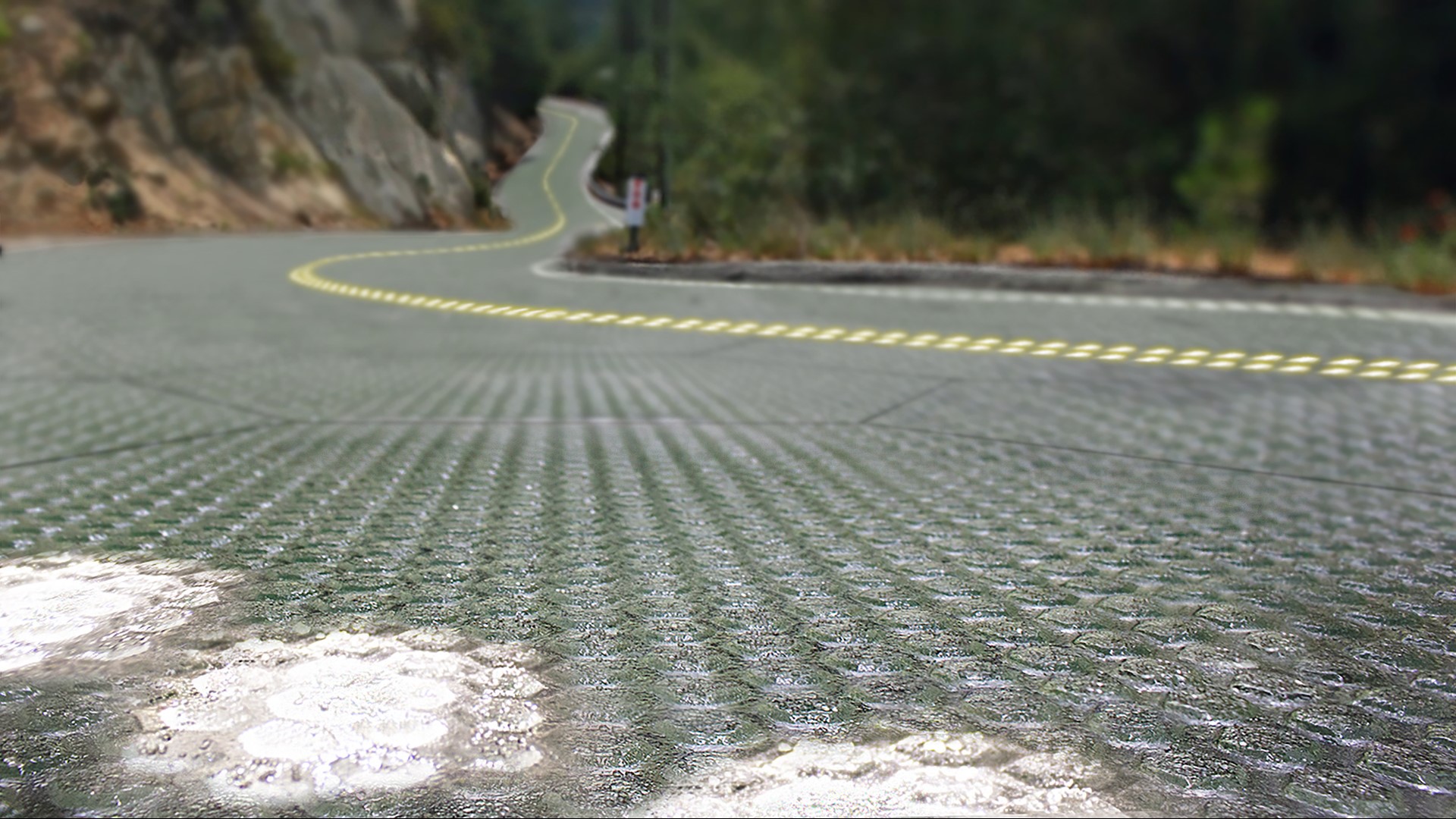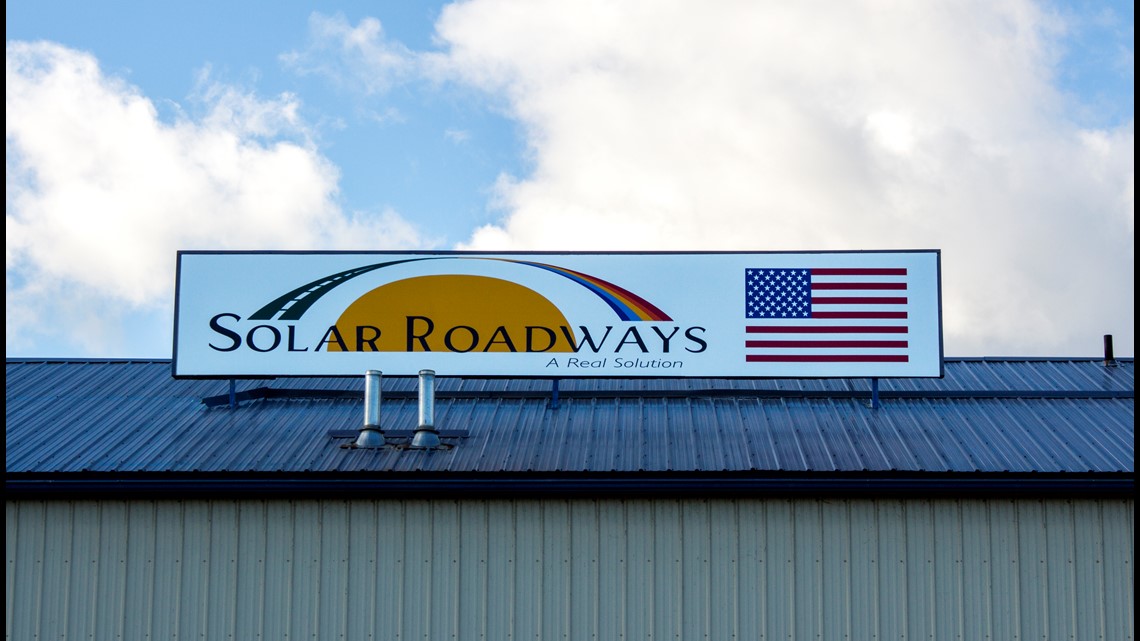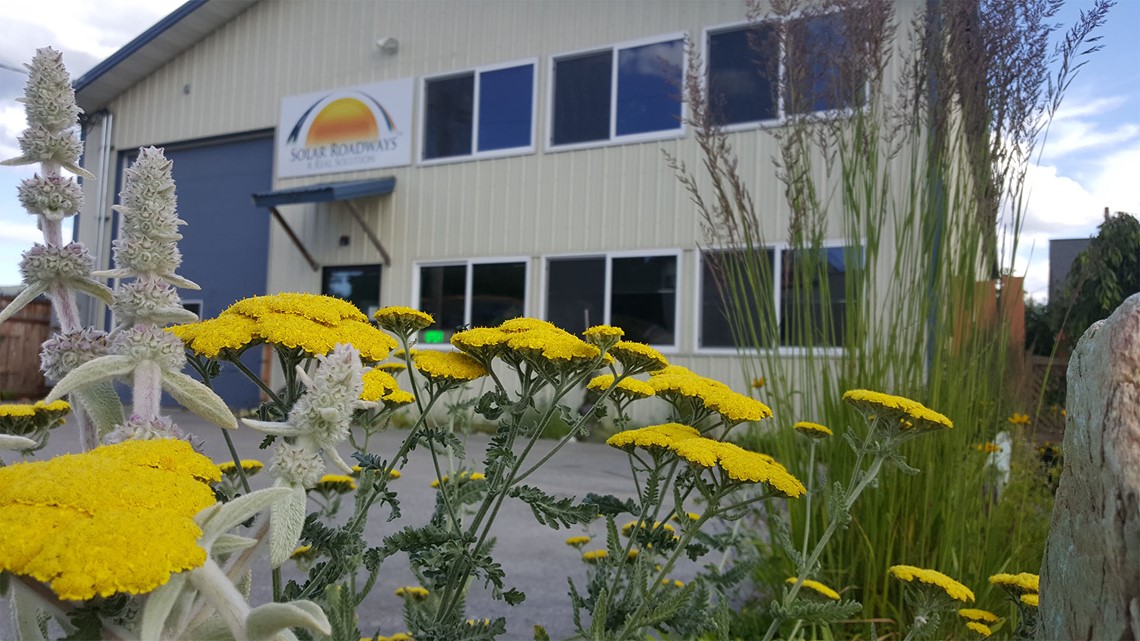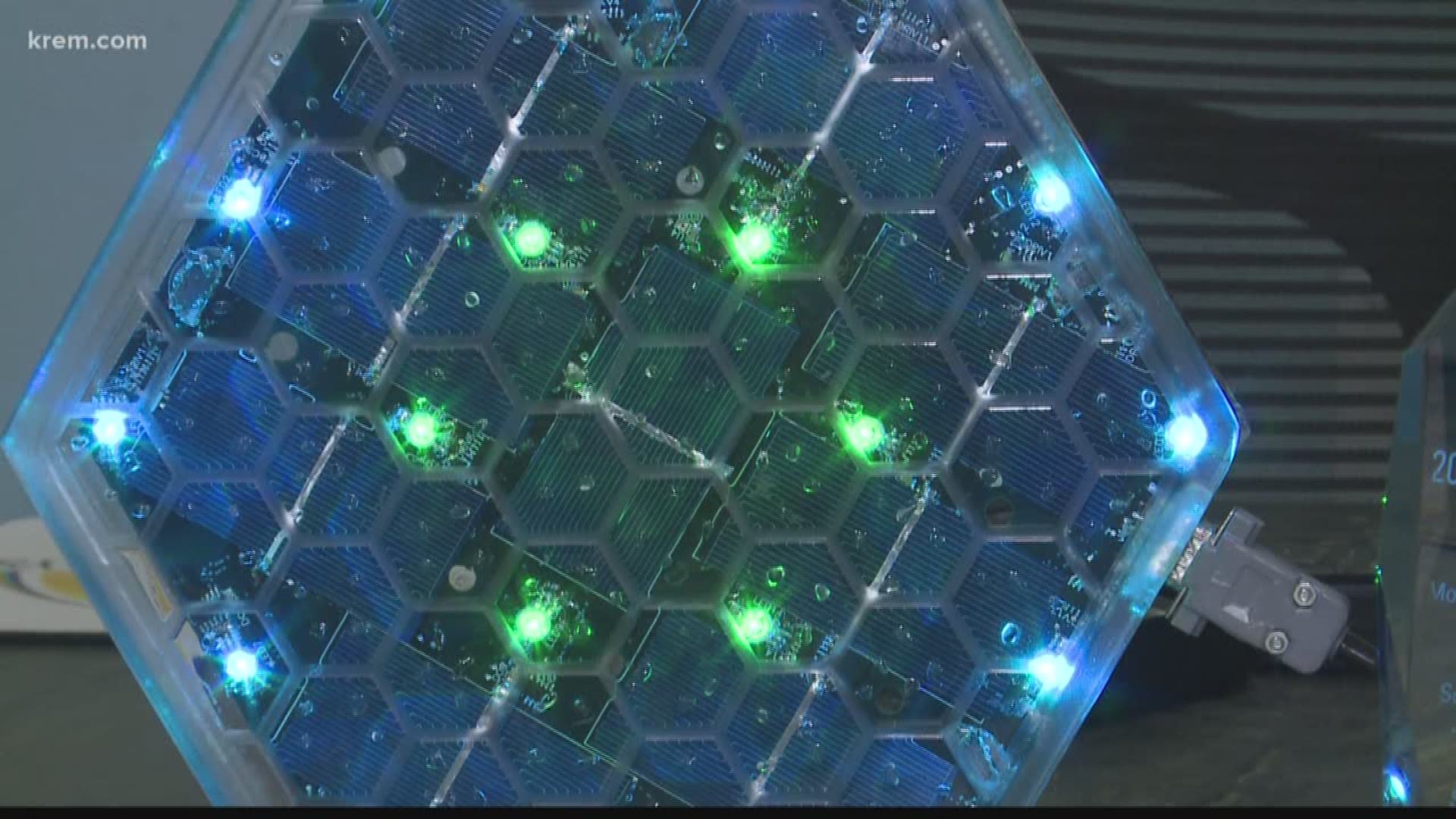Solar Roadways takes one step closer to mass production
The investor estimates if we used solar panels to cover 48,000 square miles of paved surfaces in the lower 48 states, we would produce three times more power than our nation uses.

SANDPOINT, Idaho – Solar Roadways out of Sandpoint, Idaho continues to make huge strides in creating a new energy source while making improvements to the invention along the way.
It is the fiery ball fueling life. NASA estimates you would have to explode 100 billion tons of dynamite every second of every day to match the energy produced by the sun and Scott Brusaw wants a piece of it.
"In a nutshell to save the planet. To cut down or eliminate greenhouse gasses," he said.
Brusaw estimates if we used solar panels to cover 48,000 square miles of paved surfaces in the lower 48 states, we would produce three times more power than our nation uses.
But how exactly do you do that? Scott and his wife Julie have spent just about every day over the past 10 years working to answer that question while developing Solar Roadways.
"No. I don't need to sleep anyways," he said.
Perhaps it is a mix of sleep deprivation and passion that helped got Solar Roadways to its monumental leap.
"We signed with our first manufacturing contract in Dayton, Ohio. So, they'll be making the first SR4's. And we're in talks with our first manufacturing company here in North Idaho," he said. "That means we can get the price way down. And our ultimate goal is to have this at a big box store where homeowners can do their driveways, business people can do their parking lots."
That kind of availability is still down the road, so to speak. Appreciating this mile-marker requires a look in the rearview mirror.
KREM 2 first met Scott in 2009 when his solar roadways idea was no more than a concept on a computer. He got the attention of the U.S. Department of Transportation who gave Solar Roadways a $100,000 Small Business Innovative Research Grant. Instead of writing a research paper, Scott pounded out a prototype. By 2014, they had built the first ever solar parking lot. They installed more panels outside their home just a few years ago.
The Brusaws got to the next phase with the help of a record-setting crowdfunding campaign back in 2014. It raised more than $2.2 million. After Indiegogo, credit card and other fees, the Brusaws say they got about $1.5 million before the tax man took another huge chunk.


This allowed them to buy a Sandpoint building to serve as the Solar Roadways research and development headquarters. They hired a few employees and bought their first small scale manufacturing equipment. Of course, they were not actually made to make solar roads since nobody ever needed machines for that before.
It was a sometimes painful process getting to their third prototype, the first public test project, installed in Sandpoint's Jeff Jones Square in 2016. Scott sees the imperfections in the project. He also sees success and new knowledge. After fixing some panels that blinked out, they have found the energy generation and metering is falling short. The next phase has a fix.
"We learned some pretty scientific stuff about snowfall," he explained.
They have learned they will need to distribute power around the new panels to get more even snow melt. The metal tracks between the panels are not heated so when the heaters melted the snow, the water would pool and freeze.
"So, you could actually have a sheet of ice crossing the panel without actually touching it," he explained.
But there is a fix in the fourth prototype.
"That's the nice thing about the pilot project. It was there to learn what's wrong with it. We did. We've made some improvements and some corrections and SR4 will show that," he said.


Scott knows while millions of people are cheering them on there are also those criticizing the project every inch of the way. It is just one more way Solar Roadways veers off the beaten path compared to other companies.
"You don't bring the whole world along on the journey like we did, you know? We were bringing the world along before we ever put two resisters together. So, it works for and against us sometimes but I'm glad we did it that way," Scott said.
The engineer likes to think of any criticism in terms of the Wright Brothers first historic flight.
"If some of those guys were around when the Wright Brothers were trying to fly they'd have said, 'Well this only lasted 12 seconds. Epic failure, it'll never happen.’ Same thing with first automobile, everything," he explained.
So, will this latest version be perfect?
"An engineer is never going to say it's good enough. I'll find ways of making it better and I'll be looking forward to SR 5," he said.
If you still cannot imagine driving over solar roadways, Scott said it is closer than ever and it is his job to keep working away until the road of sunshine unfolds before us.




